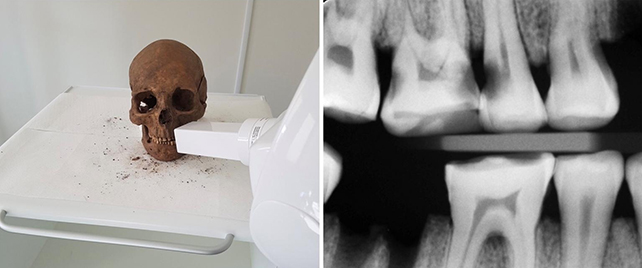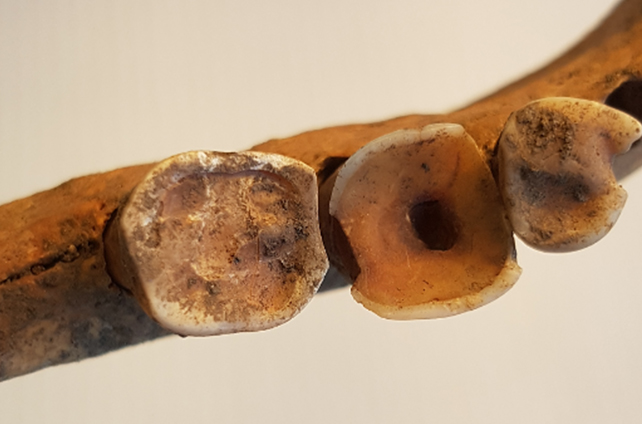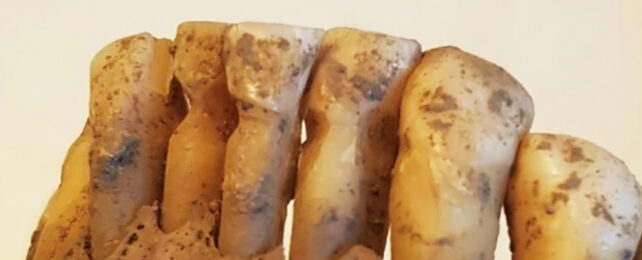A new analysis of Viking-era teeth – dating back around a thousand years – has given us some interesting insight into the dentistry of the time, which looks to have been more advanced than previously thought.
Researchers from the University of Gothenburg and the Västergötlands Museum in Sweden looked at a total of 3,293 teeth from 171 of the Nordic marauders, including both kids and adults.
Modern-day dentistry assessments were carried out on the teeth, including the use of X-ray scans and dental probes, and it turns out that these Scandinavians didn't just leave their teeth to rot and decay.

"There were several signs that the Vikings had modified their teeth, including evidence of using toothpicks, filing front teeth, and even dental treatment of teeth with infections," says Carolina Bertilsson, an odontologist from the University of Gothenburg.
The teeth date back to the 10–12th centuries CE and were collected from the well-known Varnhem archaeological dig in Sweden. The site is notable for soil conditions that favor the preservation of remains, including bones and teeth.
Of the adult teeth analyzed, 13 percent were shown to be affected by caries or cavities, often on the surface of the roots. Tooth loss was common too, with adults having lost an average of 6 percent of their teeth, excluding the wisdom teeth.
However, teeth collected from children aged under 12 showed no signs of tooth decay.

Notably, evidence of dental treatment was also seen, including attempts to fill in the holes created by molars – most probably to provide some relief from the toothache that would come as a result of infection.
"This is very exciting to see, and not unlike the dental treatments we carry out today when we drill into infected teeth," says Bertilsson.
"The Vikings seem to have had knowledge about teeth, but we don't know whether they did these procedures themselves or had help."
As for the deliberate filing of front teeth found in one individual, the researchers think this might have been for the purposes of identifying the person for some reason. It's something that's been seen in other studies.
Teeth are made of strong stuff, which makes them more likely to be preserved in the ground, giving us fascinating clues about ancient people.
Another finding of note is that by the age of 40, tooth loss was a far bigger problem for the Varnhem Vikings than tooth decay – even with their toothpicks and rudimentary treatments.
"This study provides new insights into Viking oral health, and indicates that teeth were important in Varnhem's Viking culture," says Bertilsson.
"It also suggests that dentistry in the Viking Age was probably more sophisticated than previously thought."
The research has been published in PLOS ONE.
